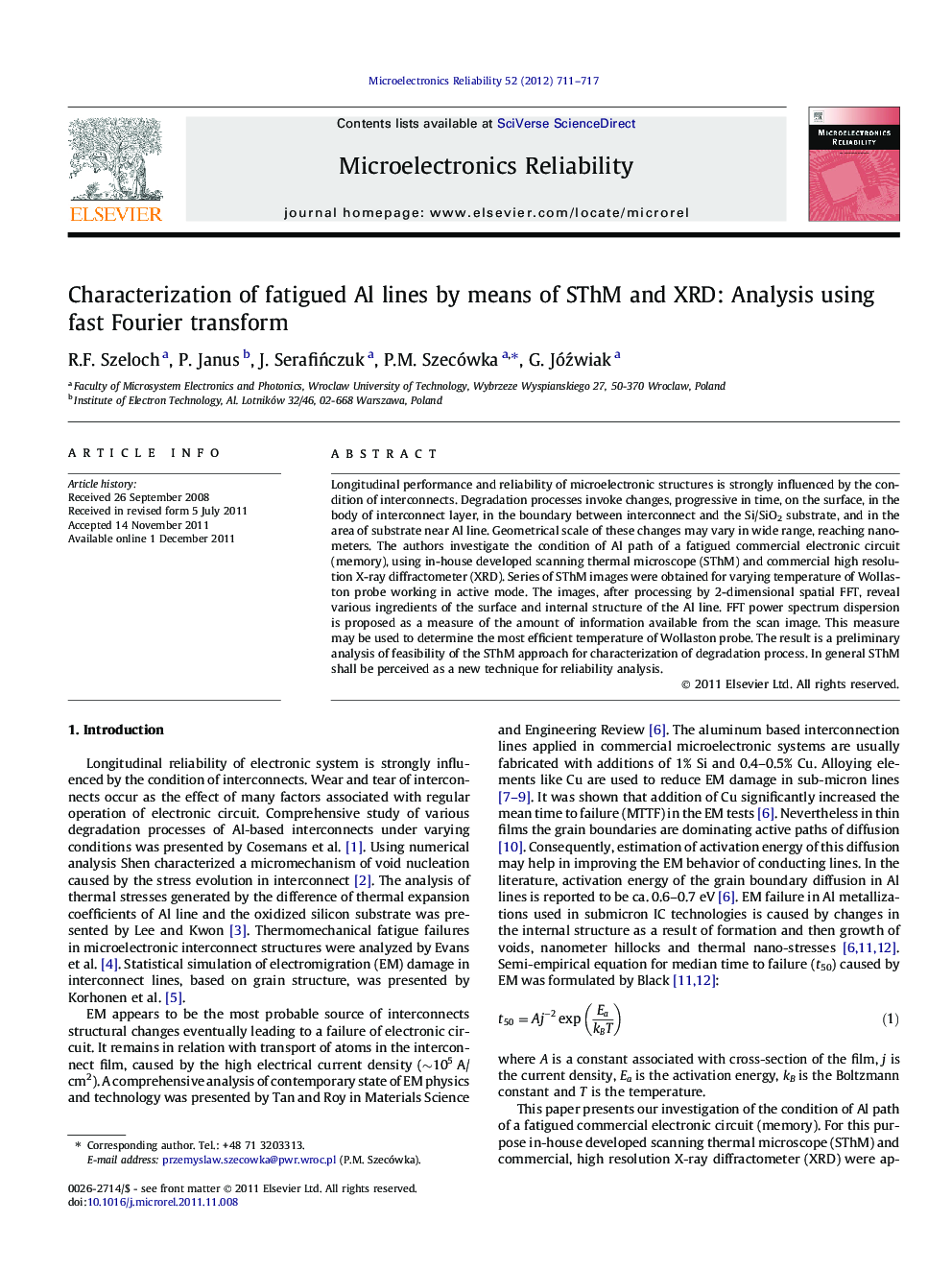| Article ID | Journal | Published Year | Pages | File Type |
|---|---|---|---|---|
| 547187 | Microelectronics Reliability | 2012 | 7 Pages |
Longitudinal performance and reliability of microelectronic structures is strongly influenced by the condition of interconnects. Degradation processes invoke changes, progressive in time, on the surface, in the body of interconnect layer, in the boundary between interconnect and the Si/SiO2 substrate, and in the area of substrate near Al line. Geometrical scale of these changes may vary in wide range, reaching nanometers. The authors investigate the condition of Al path of a fatigued commercial electronic circuit (memory), using in-house developed scanning thermal microscope (SThM) and commercial high resolution X-ray diffractometer (XRD). Series of SThM images were obtained for varying temperature of Wollaston probe working in active mode. The images, after processing by 2-dimensional spatial FFT, reveal various ingredients of the surface and internal structure of the Al line. FFT power spectrum dispersion is proposed as a measure of the amount of information available from the scan image. This measure may be used to determine the most efficient temperature of Wollaston probe. The result is a preliminary analysis of feasibility of the SThM approach for characterization of degradation process. In general SThM shall be perceived as a new technique for reliability analysis.
